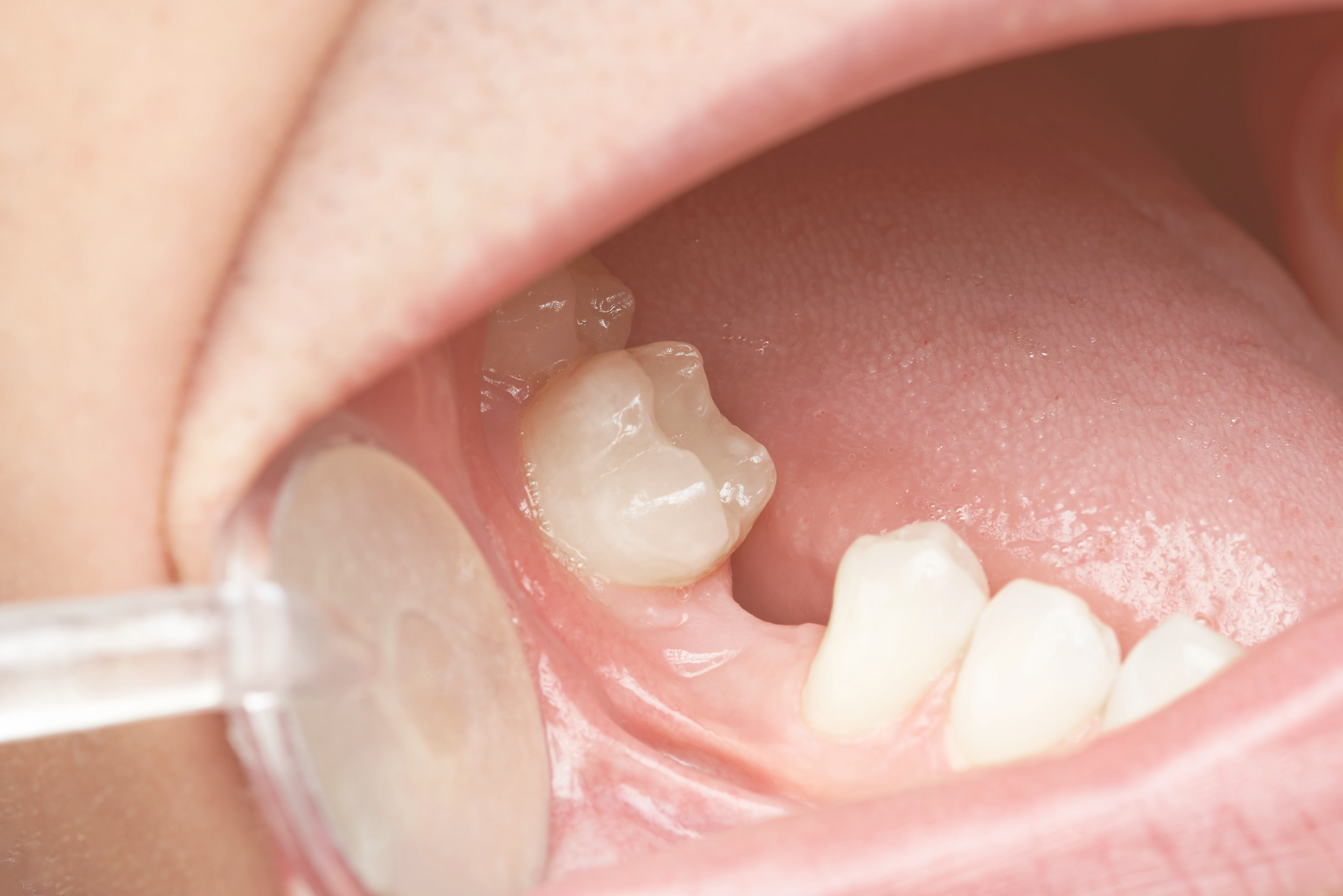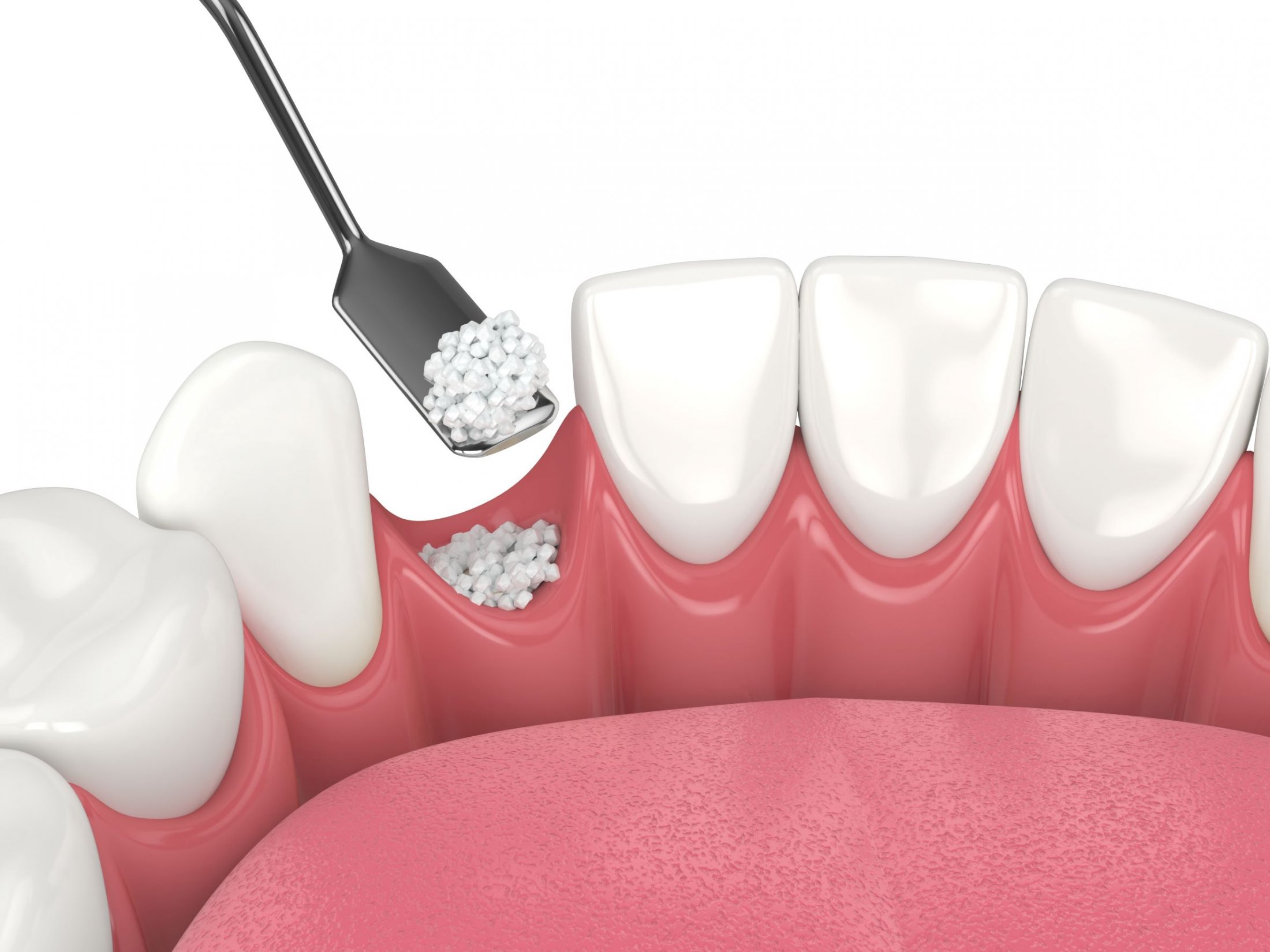Bone grafting is a surgical procedure utilized to replace, repair, or stimulate new bone growth in areas that lack sufficient natural bone mass. It refers to the process of transplanting bone tissue from one site (the donor site) to another (the recipient site), with the aim of promoting healing and restoring structural integrity. This technique can be employed for various purposes, including treating fractures that fail to heal properly, regenerating damaged bones due to trauma or disease, and preparing sites for dental implants by increasing jawbone density.

When is a Bone Graft Needed?
Bone grafting may be necessary when there is not enough bone in the jaw to support a dental implant. But how do you know if you'll need a bone graft? Well, it all depends on your individual circumstances.
- One common reason for needing a bone graft is if you have suffered from tooth loss or gum disease. When teeth are lost, or gums recede, the jawbone can begin to deteriorate due to lack of stimulation. This can lead to insufficient bone density and make it difficult for an implant to anchor properly.
- Another situation where a bone graft may be required is if you have experienced facial trauma that has damaged the jawbone. In these cases, restoring the bone structure through grafting will provide stability and support for an implant.
- Additionally, some individuals naturally have insufficient bone volume in their jaws. This could be due to genetics or other factors beyond their control. In such cases, a bone graft can help create a solid foundation for successful implant placement.
It's important to note that only your dentist or oral surgeon can determine whether or not you require a bone graft based on a thorough examination and evaluation of your specific condition.
The Bone Graft Procedure
The bone graft procedure is a surgical intervention that helps to restore and strengthen the jawbone in preparation for dental implant placement. During this procedure, your dentist or oral surgeon will take a small piece of bone from another part of your body, such as the hip or chin, or use synthetic bone material.
Before the surgery begins, you will be given anesthesia to ensure that you are comfortable and pain-free throughout the procedure. Your dentist will then make an incision in your gum tissue to access the underlying jawbone. The donated bone or synthetic material is carefully placed in the area where it's needed most.
Once the graft has been placed, your dentist may secure it with screws or sutures before closing up the incision site. Over time, new blood vessels will grow into the grafted area and help promote healing and integration with your existing jawbone.
After undergoing a bone graft procedure, it's common to experience some swelling and discomfort around the surgical site. Your dentist may prescribe pain medication or recommend over-the-counter pain relievers to manage any post-operative pain.
To aid in healing and minimize complications, it's essential to follow all post-operative instructions provided by your dental professional. This may include taking antibiotics as prescribed, maintaining good oral hygiene practices at home, avoiding certain foods that could irritate the surgical site, and attending follow-up appointments for monitoring and care.

Recovery After A Bone Graft Procedure
After undergoing a bone graft procedure, it's important to know what to expect during the recovery process. While everyone's experience may vary slightly, there are some general guidelines that can help you understand what lies ahead.
- First and foremost, it's normal to experience some discomfort or pain after the surgery. Your dentist will likely prescribe pain medication to help manage any soreness you may feel. It's also common for swelling and bruising to occur around the surgical site, but this should gradually improve over time.
- To aid in the healing process, your dentist may recommend certain precautions, such as avoiding hard or chewy foods and refraining from smoking. Maintaining good oral hygiene is crucial during this time as well, so be sure to follow any specific instructions given by your dental professional.
- In terms of timelines, it typically takes several months for the bone graft to fully heal and integrate with your existing jawbone. During this period, regular check-ups with your dentist will be necessary to monitor progress and ensure everything is healing properly.
It's worth noting that every individual heals at their own pace, so patience is key throughout this process. Remember that while bone grafting may require additional time and effort compared to a straightforward implant procedure, it provides a solid foundation for long-term success.
Alternatives to a Bone Graft
If you've been told that you need dental implants but are concerned about the possibility of needing a bone graft, don't worry – there are alternatives! While bone grafting is a common procedure used to build up the jawbone before implant surgery, it may not always be necessary, depending on your specific circumstances.
- One alternative option is mini dental implants. These smaller-sized implants can often be placed directly into the existing bone without the need for additional augmentation. Mini implants are ideal for patients who have less available bone or who want a more minimally invasive treatment option.
- Another alternative is All-on-4 dental implants. This innovative technique involves placing four strategically positioned implants in each arch, providing stability and support for a full set of teeth. With All-on-4, even patients with significant jawbone loss may be able to avoid the need for extensive bone grafting procedures.
- In some cases, removable dentures or bridges may also serve as an alternative solution. While these options may not provide the same level of stability and longevity as dental implants, they can still offer functional and aesthetic improvements when replacing missing teeth.
It's important to discuss all possible alternatives with your dentist or oral surgeon to determine which option is best suited for your individual needs. Remember, every patient's situation is unique, and what works for one person may not be ideal for another.

Frequently Asked Questions
Q. How long does a bone grafting procedure take?
When it comes to the duration of a bone grafting procedure, several factors come into play that can influence the timing. The complexity and extent of the graft needed, along with individual patient circumstances, dictate the overall length of this surgical process. Typically, bone grafting procedures may last anywhere from one to three hours. However, it is crucial to remember that this estimate can
vary depending on variables such as the location of the bone defect and whether any additional dental treatments are required simultaneously.
Q. How does platelet-rich plasma (PRP) and bone morphogenetic protein (BMP) improve bone growth?
Platelet-rich plasma and bone morphogenetic protein serve as remarkable components in enhancing bone growth during certain medical procedures like dental implants or spinal fusions. PRP contains concentrated amounts of platelets rich in growth factors obtained from a patient's own blood; when applied at specific sites during surgery or injections, these growth factors stimulate cell proliferation and tissue regeneration around damaged bones. Similarly, BMPs are naturally occurring proteins capable of promoting osteogenesis – new bone formation – by initiating signaling pathways within cells responsible for producing more mineralized tissue.
Q. How much does bone grafting cost?
When considering bone grafting, it is important to keep in mind that the cost can vary depending on several factors, such as the type of procedure required, geographical location, and individual patient needs. The overall expense may include pre-operative consultations, imaging tests, surgical fees, anesthesia charges, post-operative care, and follow-up appointments. Additionally, the choice between using synthetic materials or harvesting bone from elsewhere in your body can also influence the cost. It is advisable to consult with a qualified healthcare professional who can provide an accurate estimate based on your specific circumstances.
Bone grafting is a common procedure used in dental implant treatments to ensure a stable foundation for the implants. It may be necessary if you have insufficient bone density or volume in your jaw. While a bone graft may seem like an additional step in the dental implant process, it plays a crucial role in ensuring the long-term success and stability of your implants. Your dentist will thoroughly evaluate your specific situation and determine if you require a bone graft before proceeding with the implant placement
Visit Our Office
Office Hours
- MON - THU8:30 am - 5:00 pm
- FRIBy appointments only
- SAT - SUNClosed
